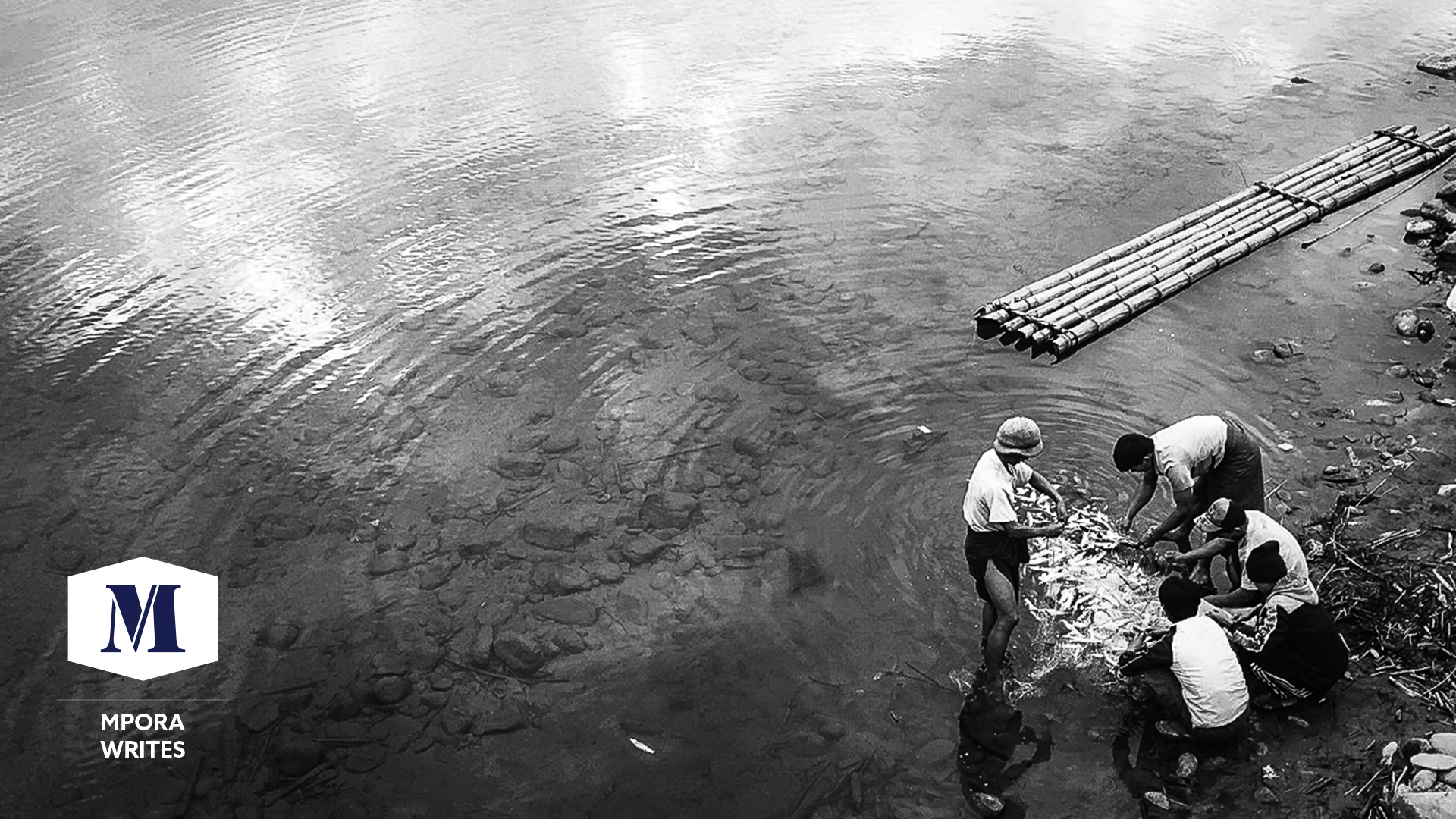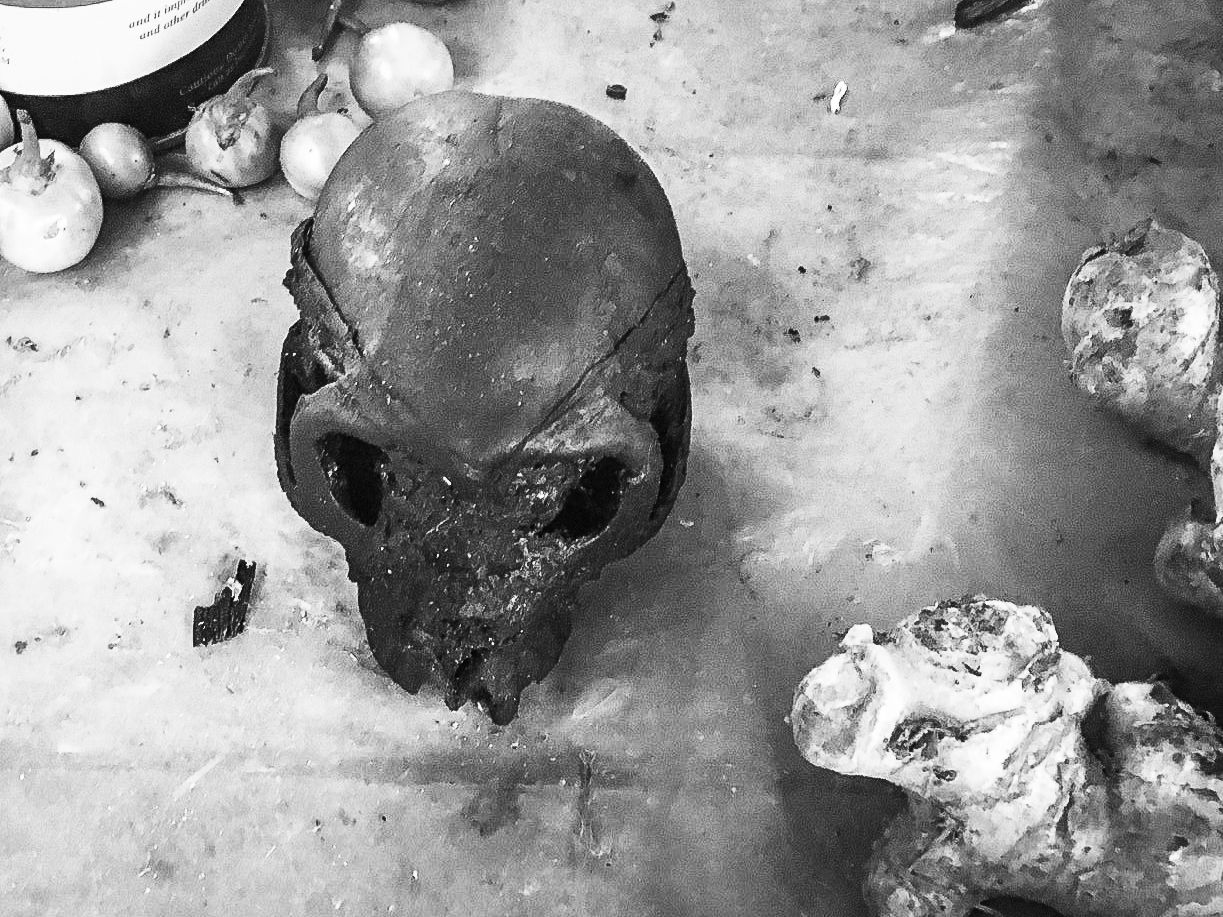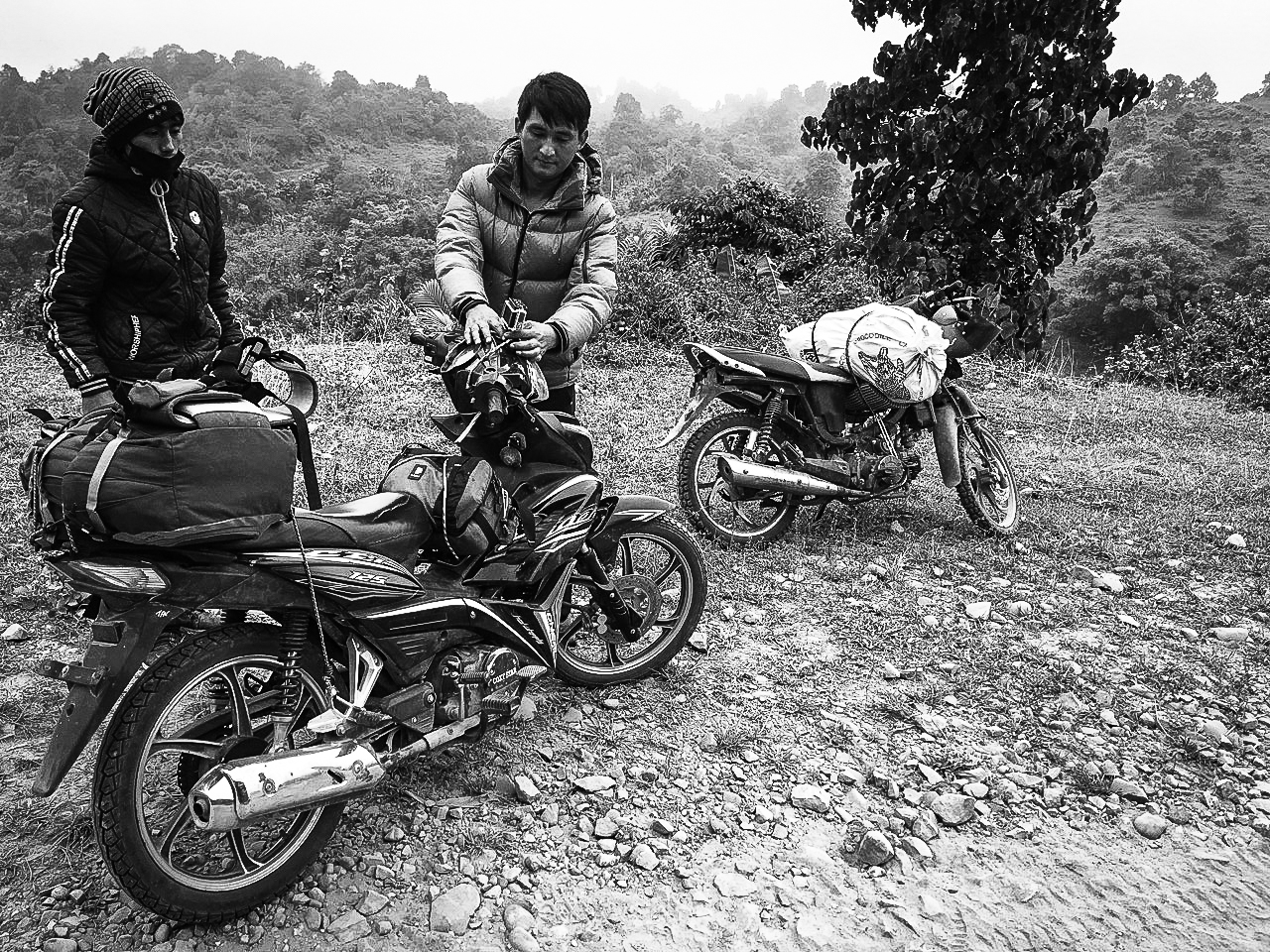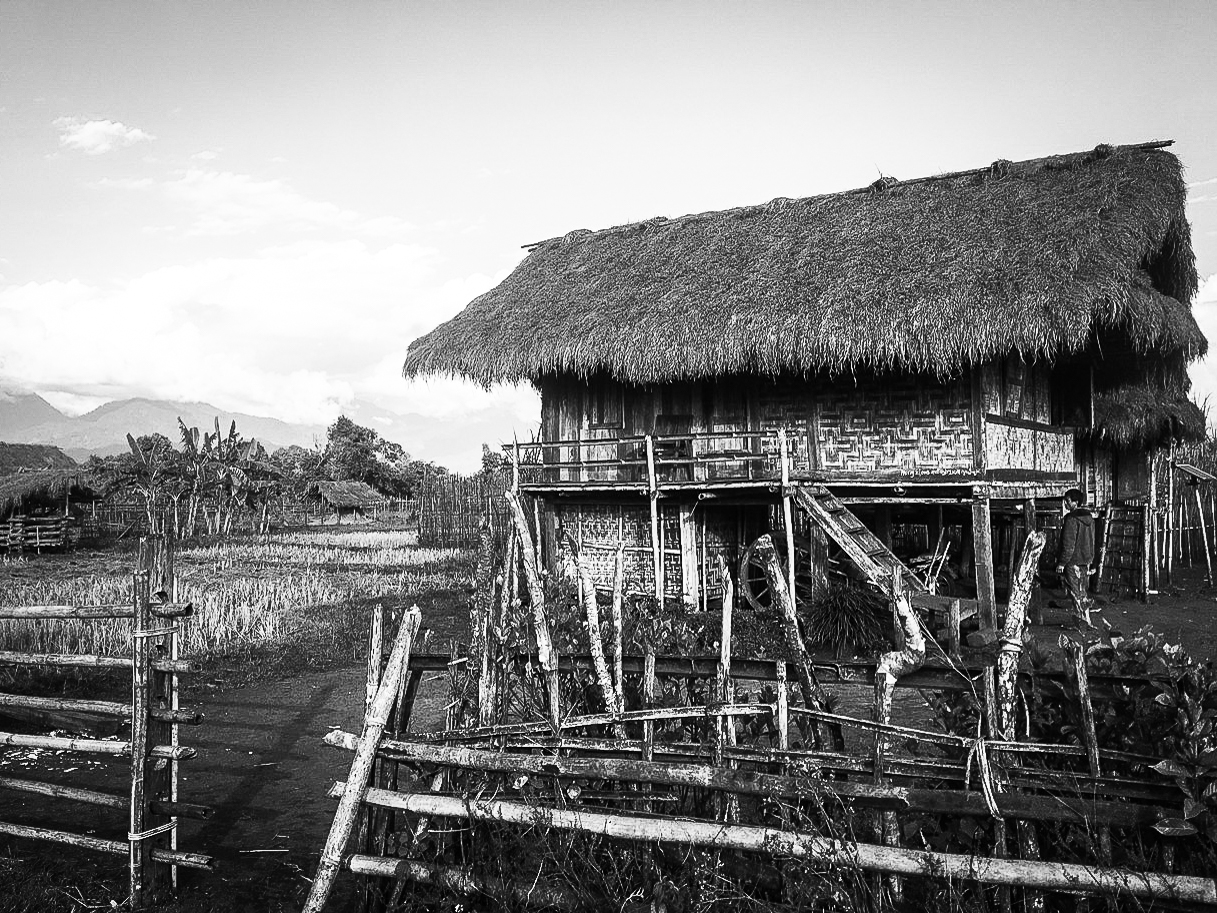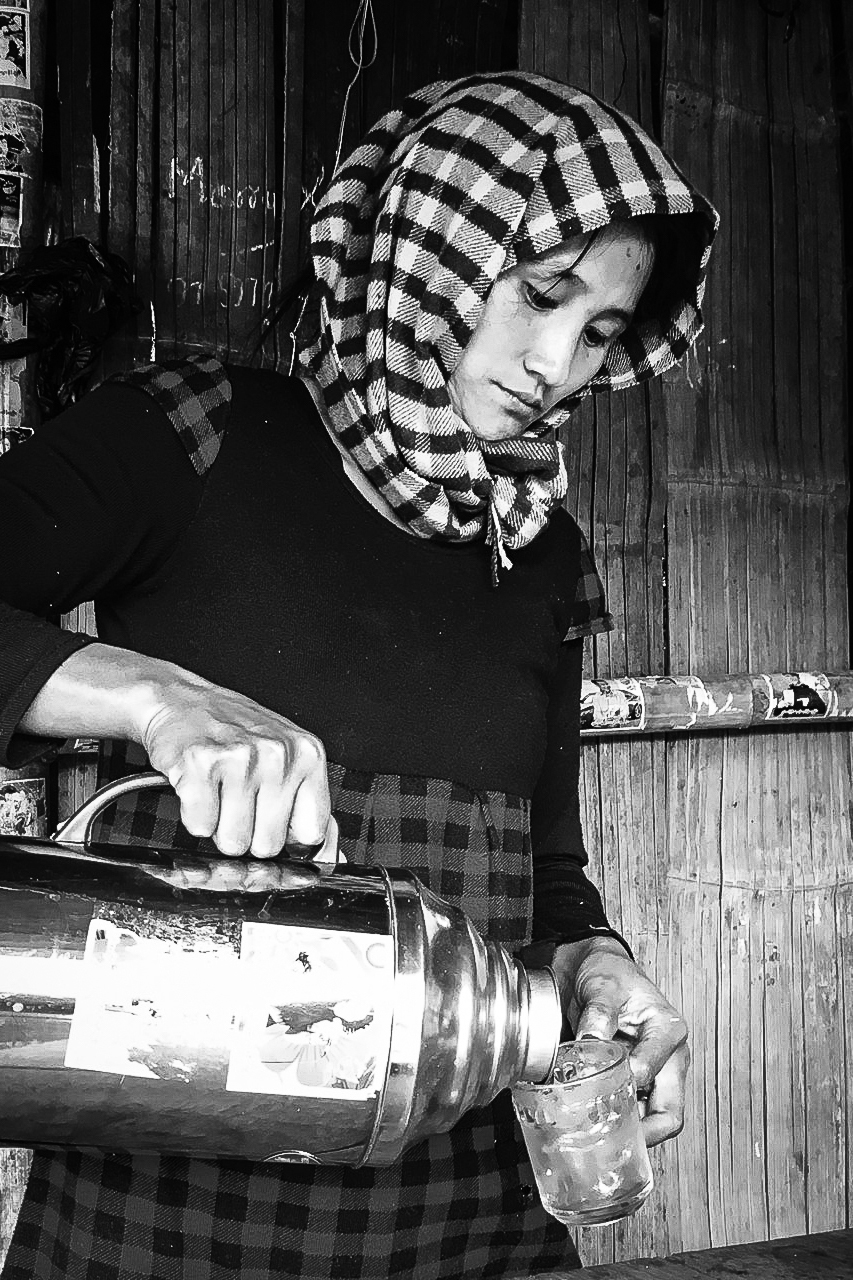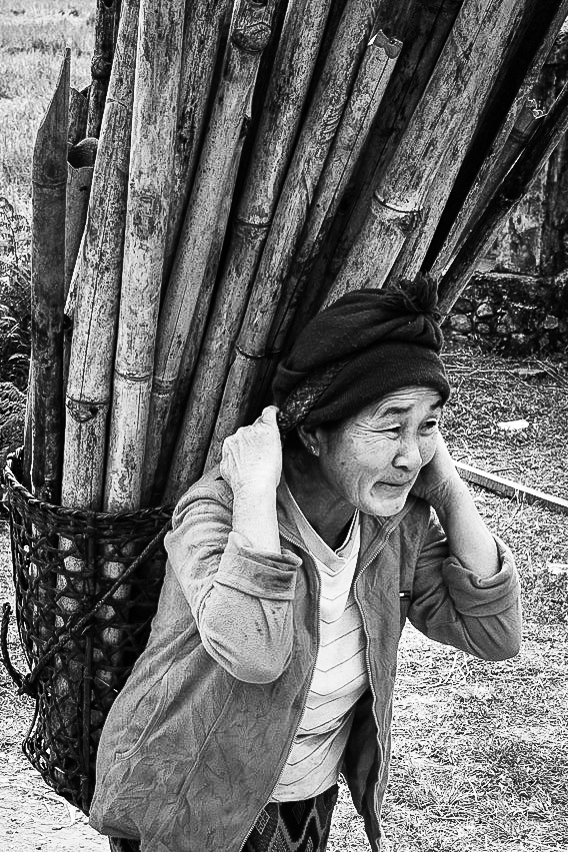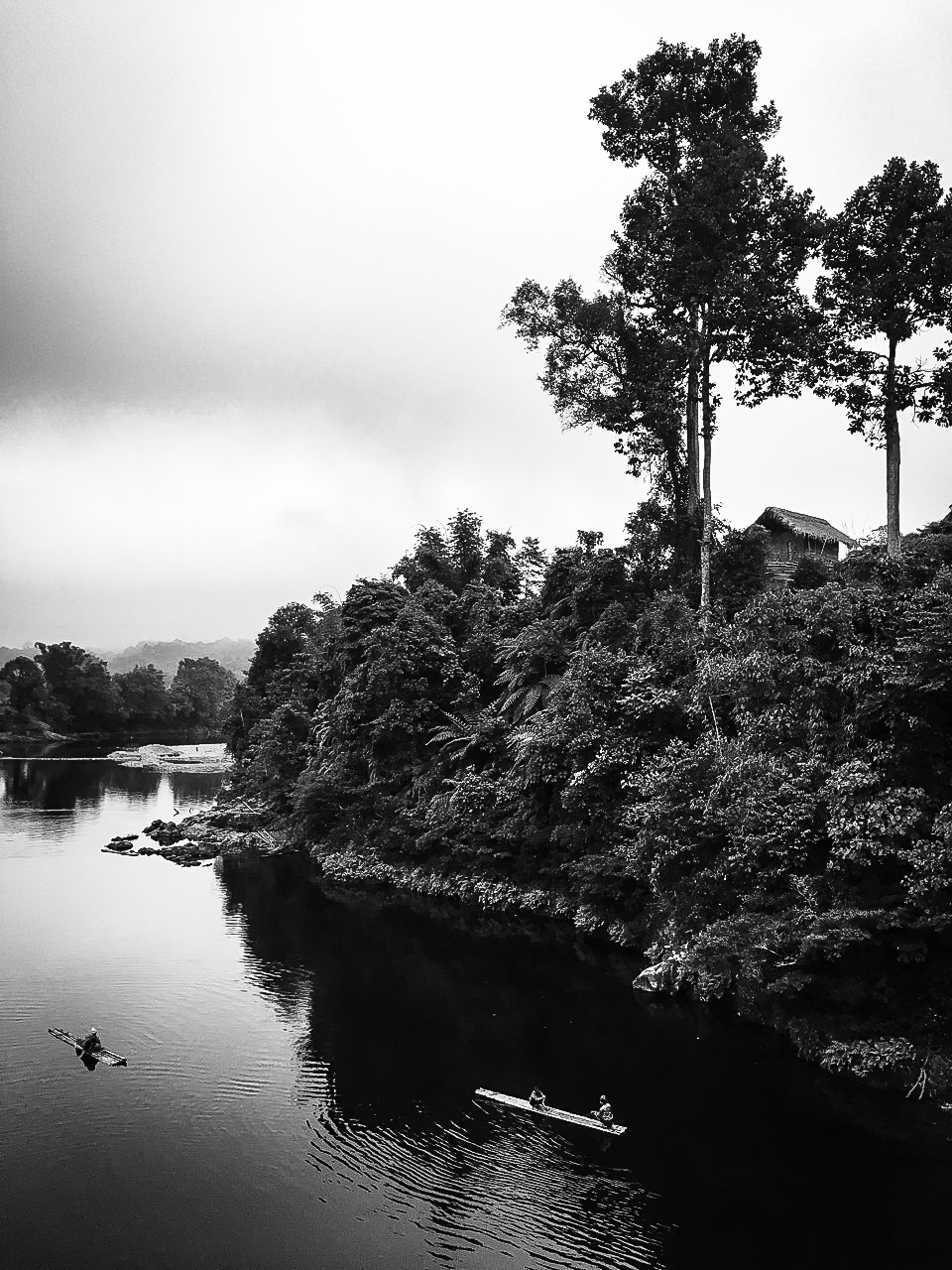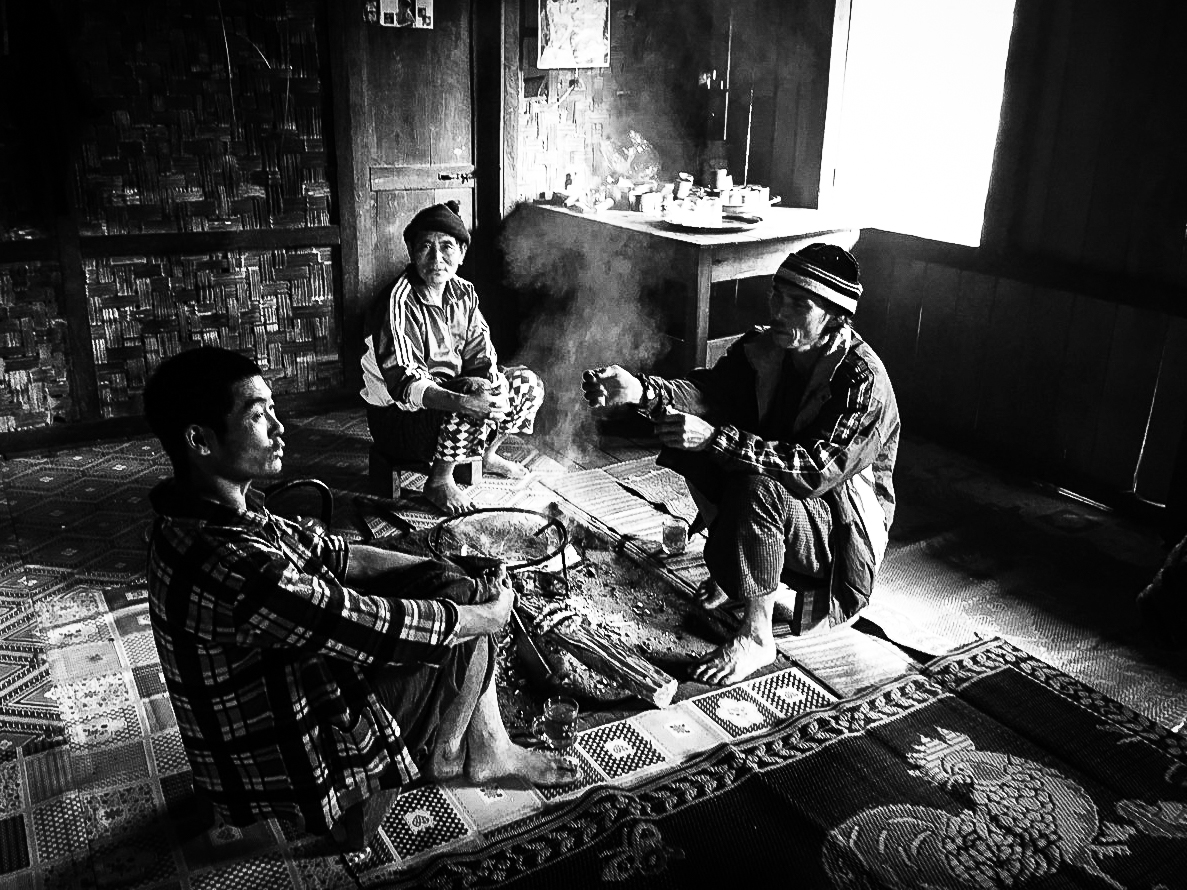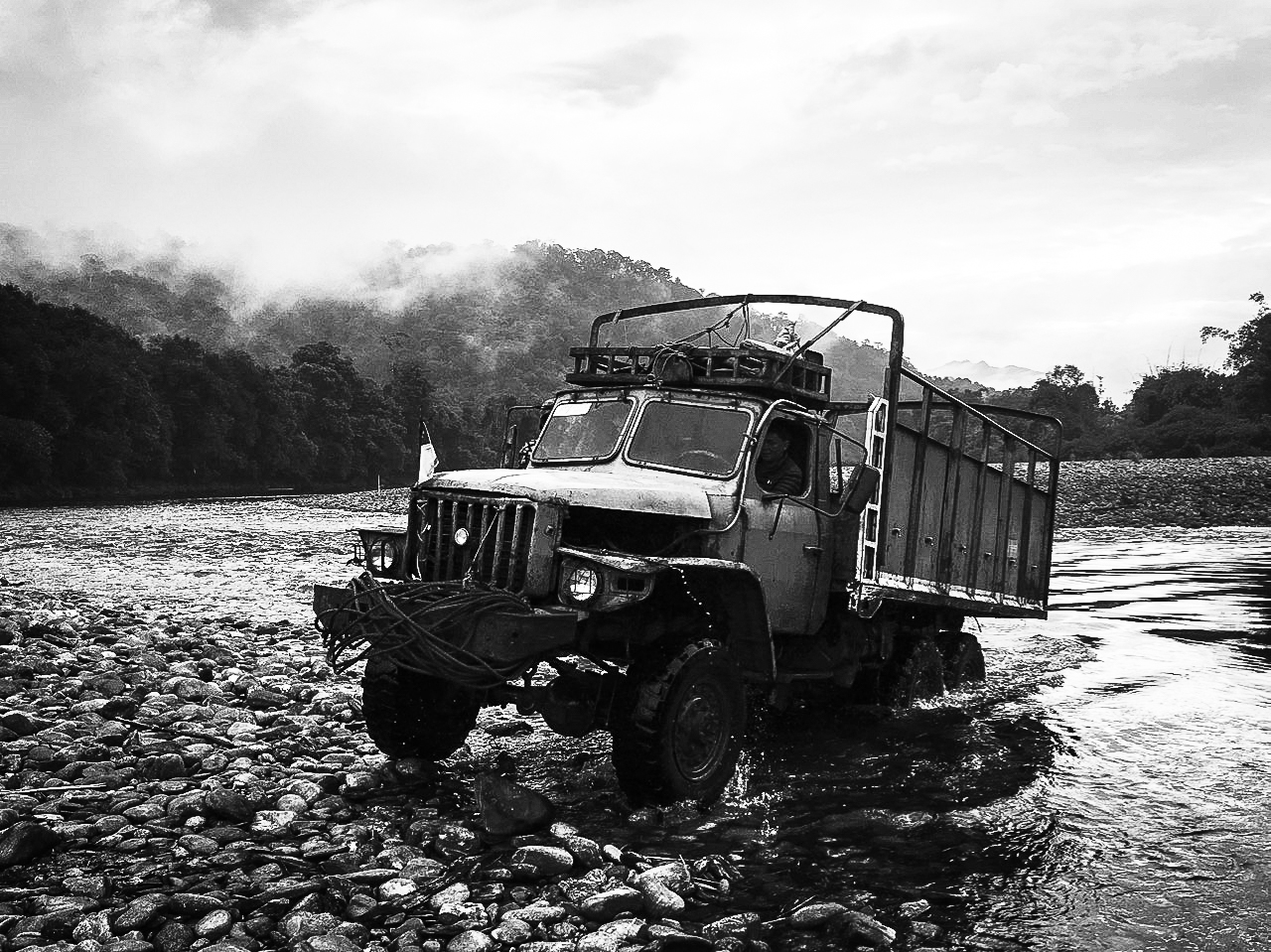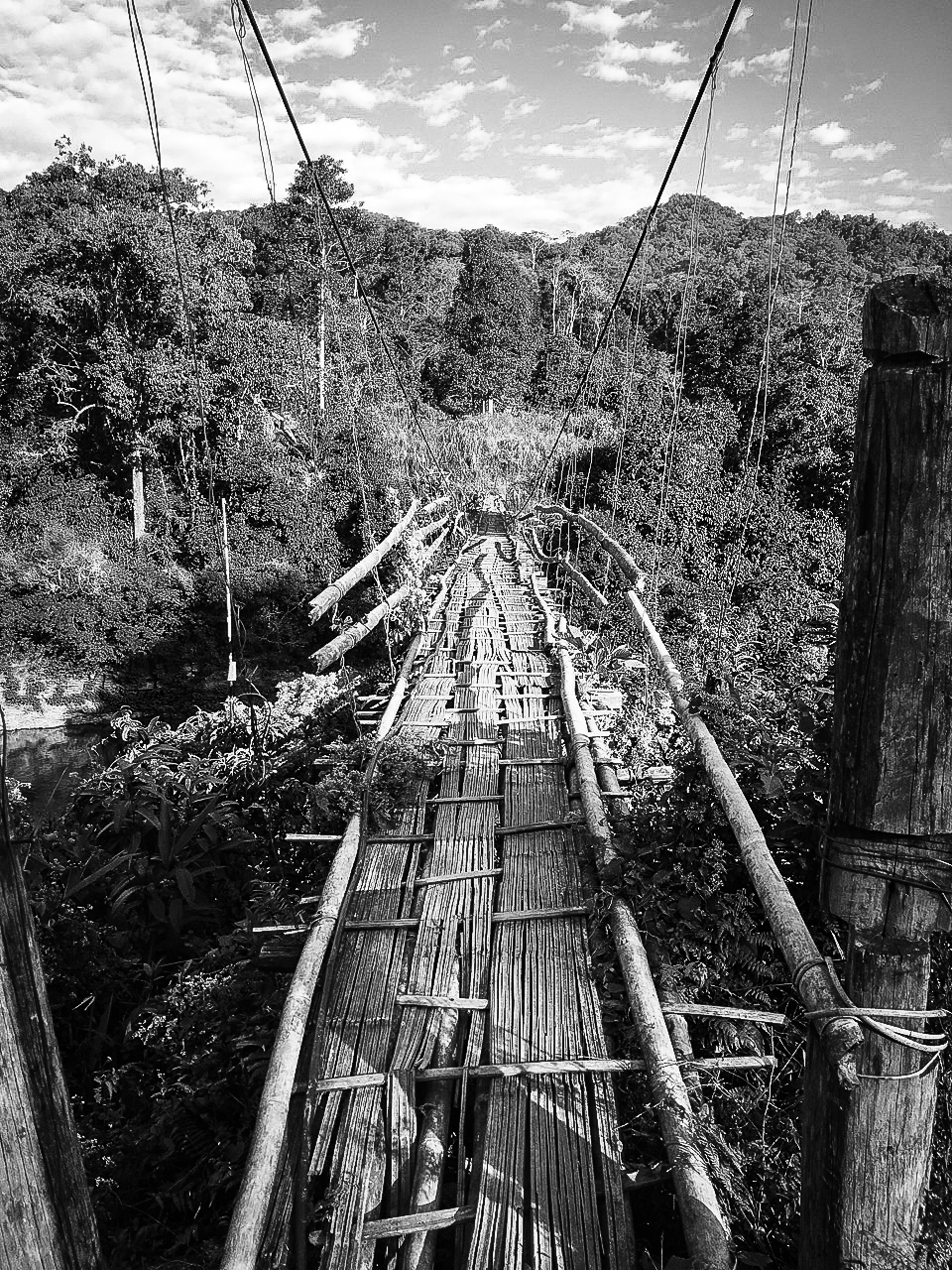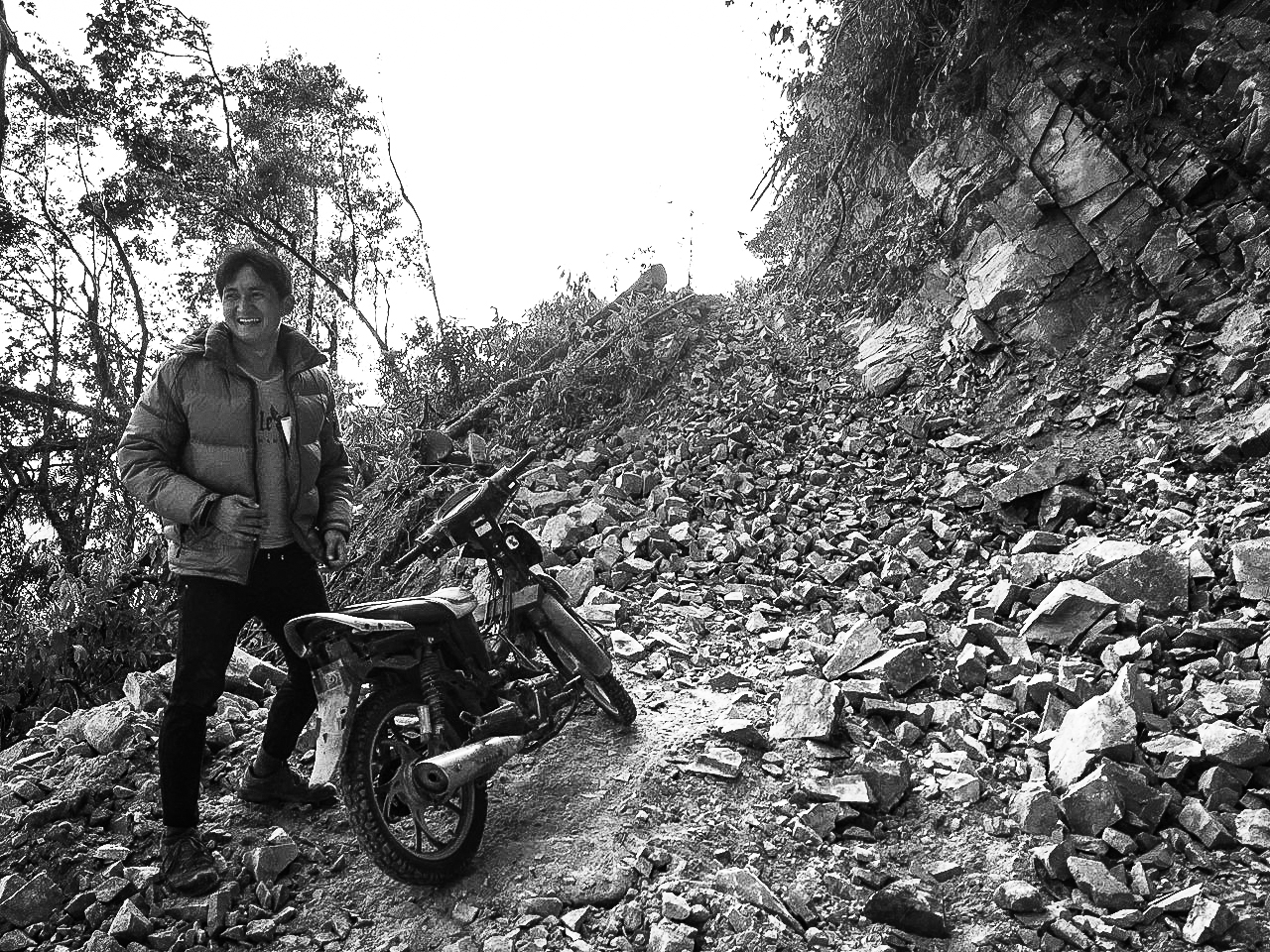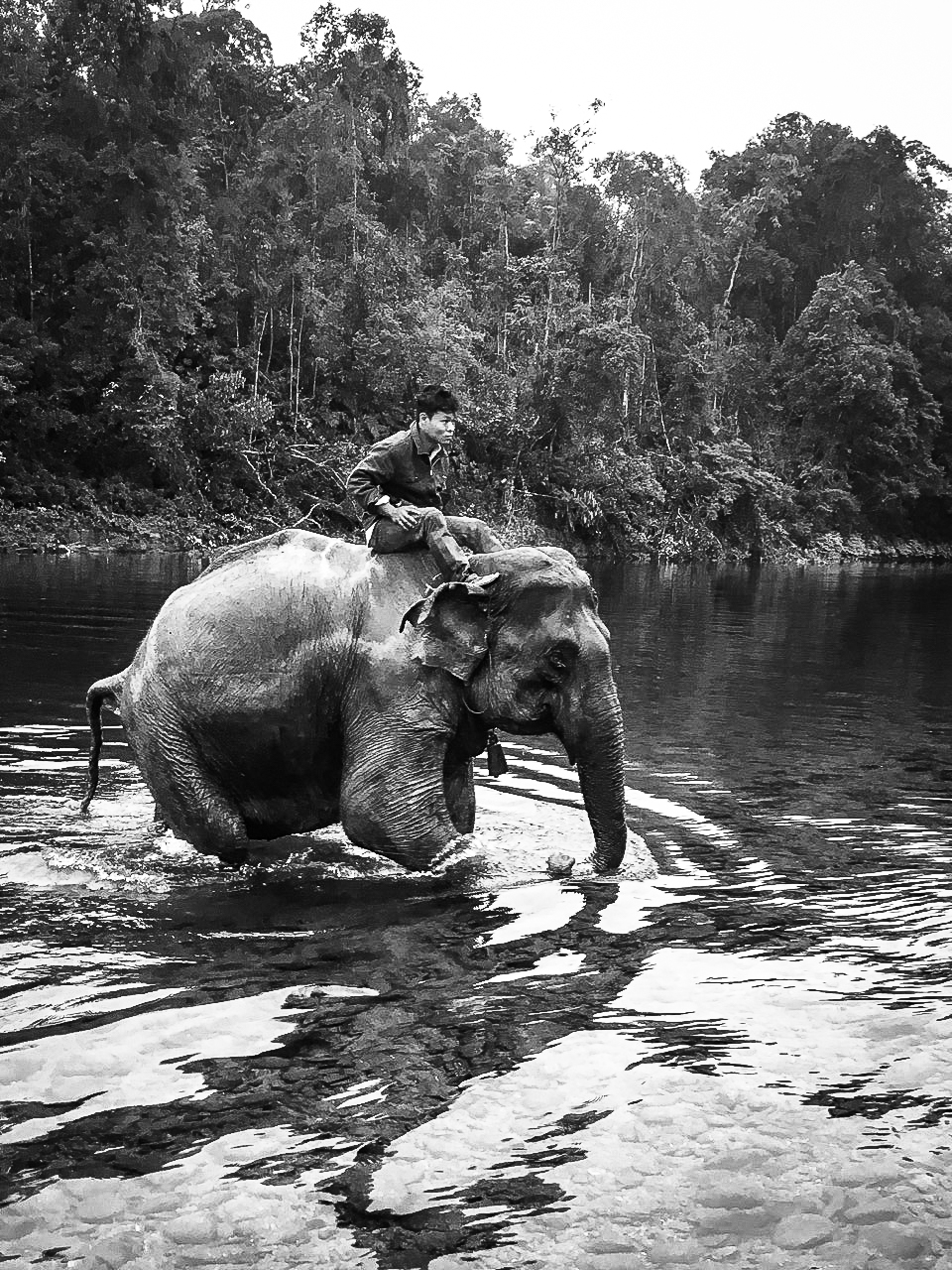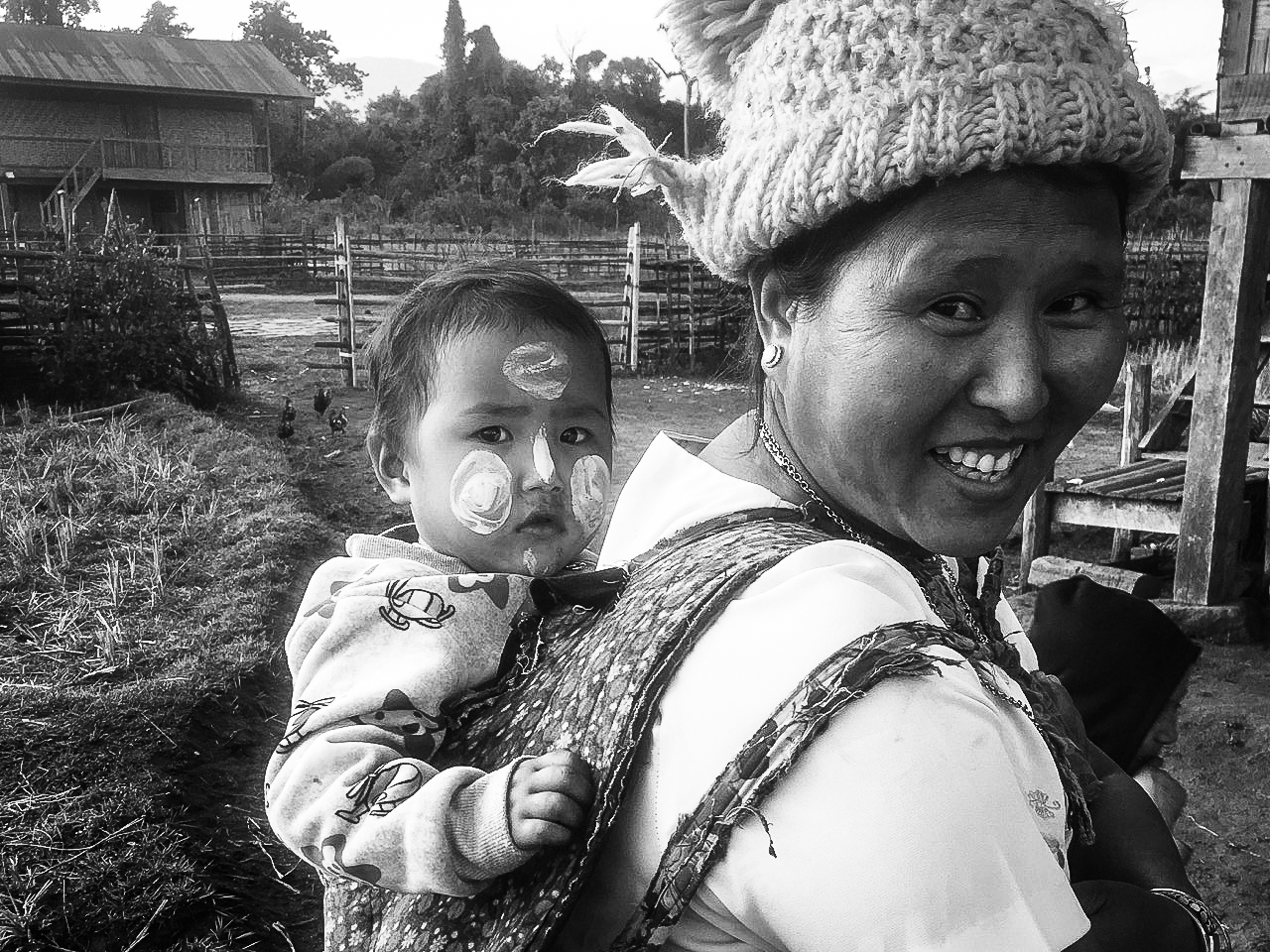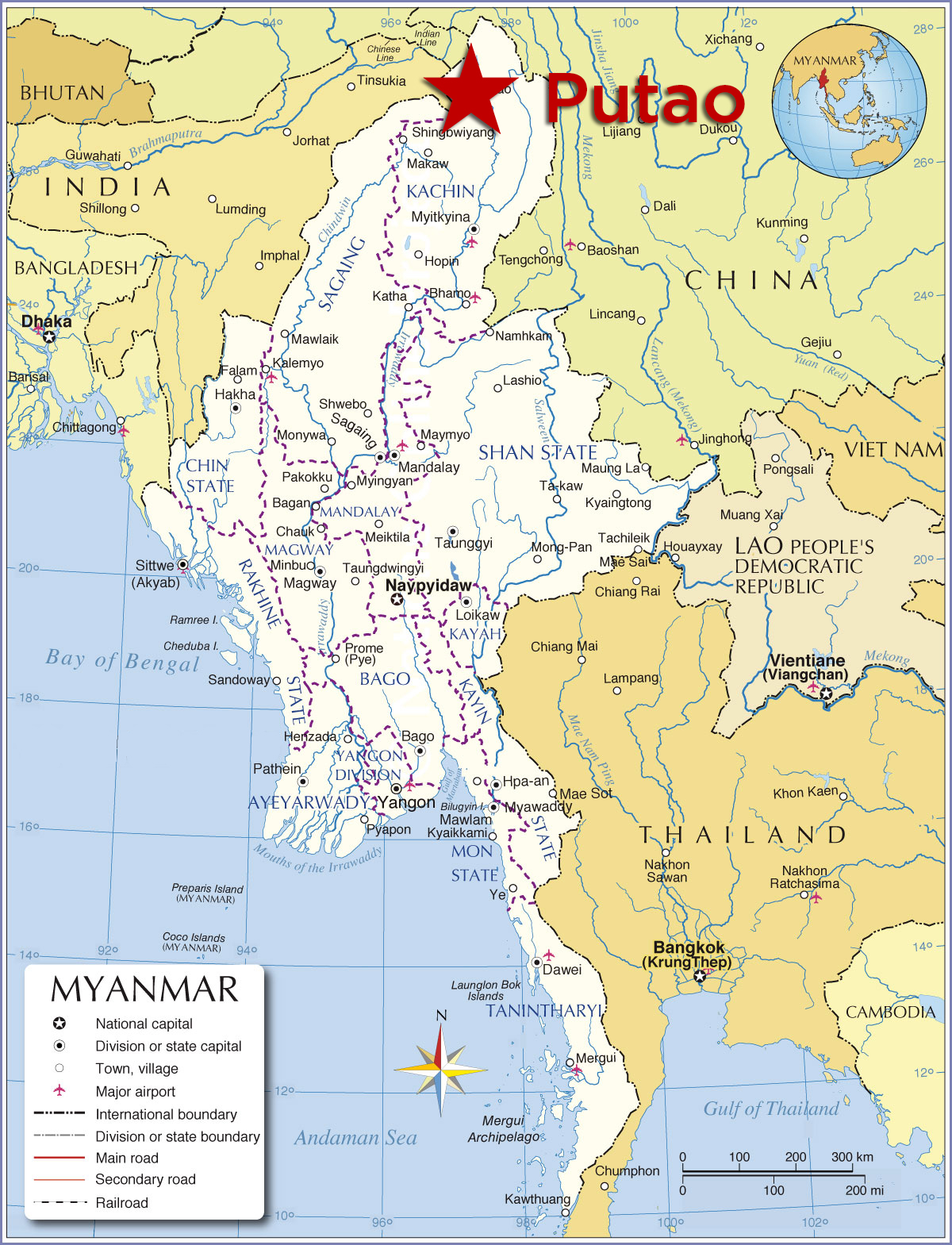Words and pictures by Andy Benfield
The headgear made of bamboo and curved animal tusks was a dead giveaway that the small boy sitting across from me in the departures area was going to be on the same flight. Clearly not from around these parts, he adjusted his unusual hat a little nervously as he peered wide-eyed around Yangon’s domestic airport terminal. Another obvious fellow traveller wandered past clutching a boarding pass as though his life depended on it, his hands encased in woolly mittens despite the 30-degree heat outside.
Our twin-prop plane made two stops on its journey northwards and at each one the airports got smaller, the runways got worse and we disgorged the banal-looking passengers to take on more interestingly-attired ones like these two. Soon it was me, with my western clothing and lack of tusks who began to look out of place.
“Hunting is one of the main pastimes here, either with a vintage rifle or a homemade crossbow.”
The final leg of the flight took us over tens of kilometres of densely forested mountains ribboned with rivers, with not a house, field, or even a plume of smoke in sight. After one last descent and the bumpiest landing of them all, we rolled to a standstill outside the small buildings of Putao airport. This was Burma’s northernmost airstrip, and probably its northernmost anything. It would be my jumping off point for exploring the remote region of Kachin in the foothills of the Burmese Himalayas.
Motorbikes & Monkey Heads
Putao felt more like a village than a town. There was one main street with a handful of open-fronted shops, a small market, a school and a church. Thanks to the efforts of 20th Century American missionaries the locals in these parts are Christian rather than Buddhist like much of the rest of the country, or animist like their ancestors. There were only two restaurants but whatever you ordered it would undoubtedly be fresh as hunting is one of the main pastimes here, undertaken either with a vintage rifle or a homemade crossbow.
